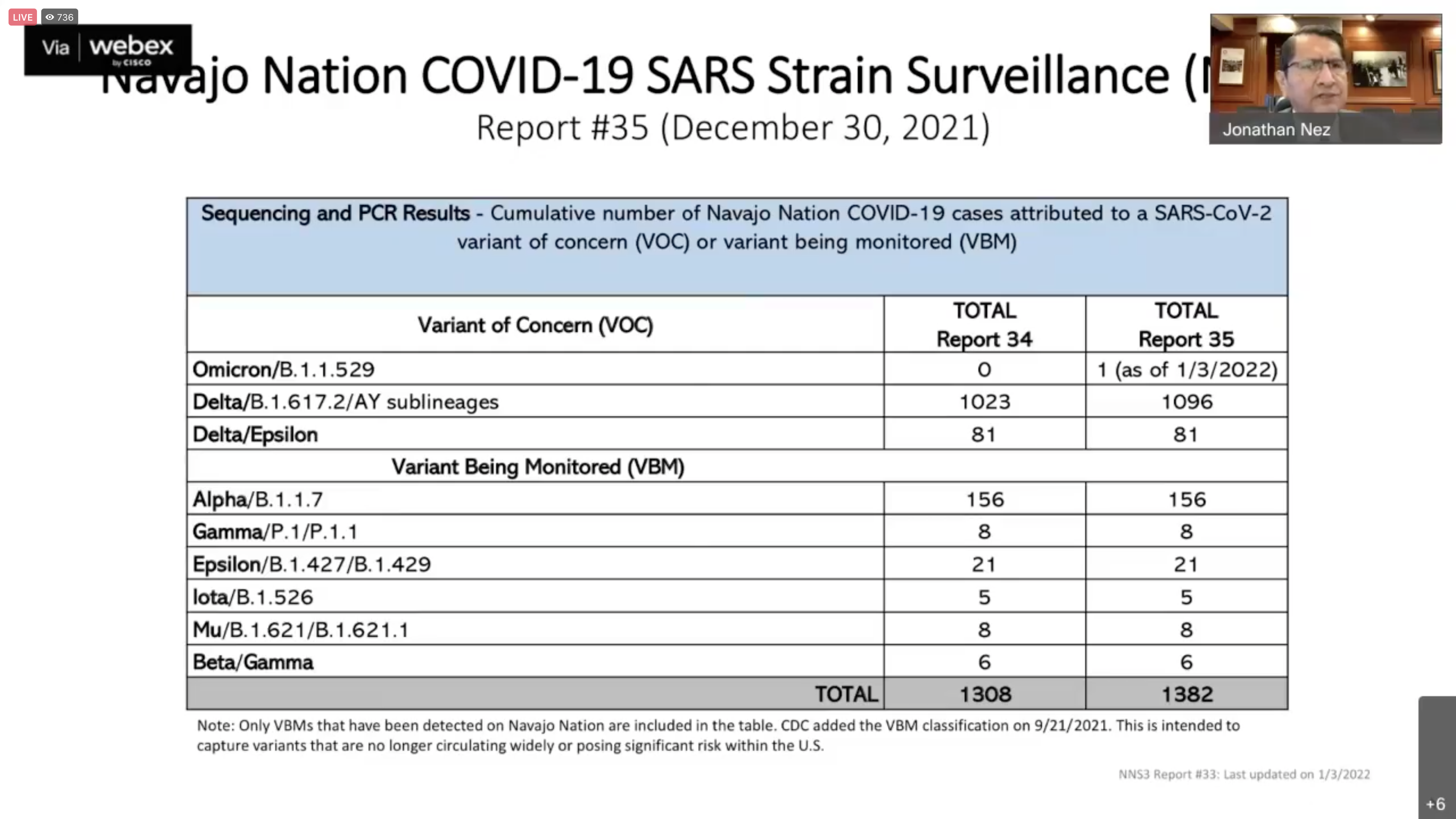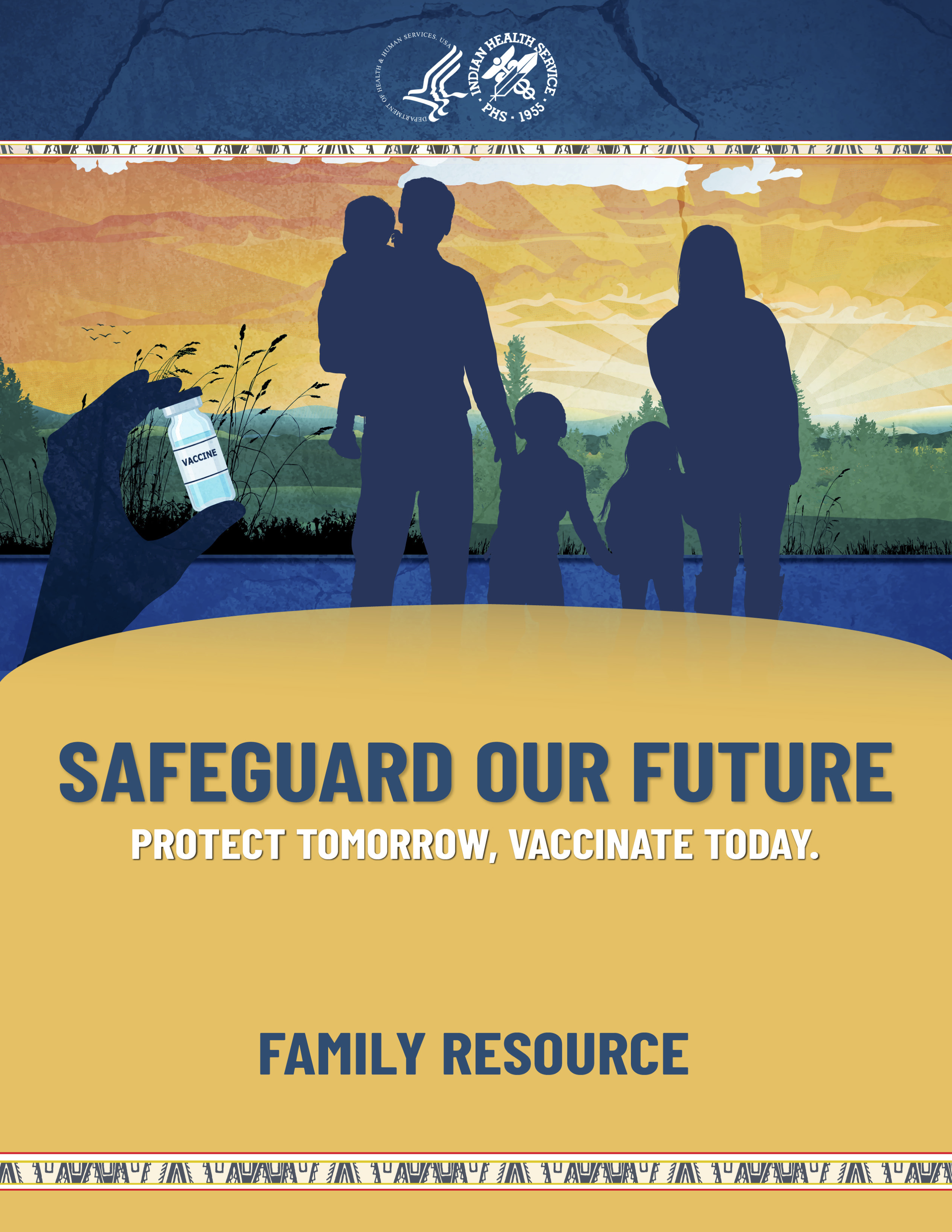Indianz.Com > News > Indian Country starts off new year with surge in COVID-19 cases
Indian Country starts off new year with surge in COVID-19 cases
Thursday, January 6, 2022
Indianz.Com
Tribal communities across the nation are once again seeing an explosion in COVID-19 cases following the busy holiday season and as a new and highly contagious variant brings upheaval to Indian Country.
Some tribes are reimposing lockdowns, the likes of which haven’t been seen since the onset of the coronavirus pandemic almost two years ago. Others are warning of negative impacts to their health care systems due to the Omicron variant that is spreading quickly throughout the United States.
“Of course you know that the Omicron variant throughout the country has surpassed the Delta variant,” President Jonathan Nez of the Navajo Nation said during a COVID-19 town hall on Tuesday.
“It was just our time, I guess, that Omicron is here,” Nez said from the largest reservation in the country.

On December 25, 2021, the 7-day rate had been 9.1 percent. That means the IHS has seen a 138 percent increase in COVID-19 cases since Christmas, based on the rolling average positivity data. Getting vaccinated remains one of the best ways to protect against COVID-19, according to public health officials. During a visit to an urban Indian provider in northern California in early December, Elizabeth Fowler, the acting director of the IHS, said the agency was ramping up efforts to remind and encourage people to complete their dosage series and get boosted as soon as possible. “We are doing all we can to get the word out about COVID-19 vaccine booster clinics and eligibility,” Fowler said at the Native American Health Center in Oakland on December 7. “IHS plans to reach more than 300,000 patients at our direct care sites before the holidays.” “We must get the word to all those who are eligible,” said Fowler, a citizen of the Comanche Nation who is the highest ranking official at the IHS.COVID-19 cases have exploded in Indian Country after the Christmas holiday, according to Indian Health Service data.
— indianz.com (@indianz) January 6, 2022
As of January 5, 2022, all 12 @IHSgov areas have high 7-day #COVID19 positivity rates, some breaking records since onset of #Coronavirus.https://t.co/Opw1Ps45hQ
COVID-19 Cases by IHS Area
Data are reported from IHS, tribal, and urban Indian organization facilities, though reporting by tribal and urban programs is voluntary. Data reflect cases reported to the IHS through 11:59 pm on January 5, 2022.|
IHS Area
|
Tested
|
Positive
|
Negative
|
Cumulative
percent
positive |
7-day rolling
average
positivity |
|---|---|---|---|---|---|
| Alaska | 906,886 | 29,029 | 763,936 | 3.7% | 11.8% |
| Albuquerque | 129,746 | 10,632 | 97,723 | 9.8% | 13.6% |
| Bemidji | 254,418 | 20,709 | 232,959 | 8.2% | 25.6% |
| Billings | 136,935 | 10,303 | 122,742 | 7.7% | 8.6% |
| California | 141,761 | 13,753 | 122,163 | 10.1% | 28.5% |
| Great Plains | 212,024 | 19,569 | 191,713 | 9.3% | 20.7% |
| Nashville | 132,583 | 11,589 | 117,648 | 9.0% | 26.3% |
| Navajo | 395,915 | 47,427 | 289,427 | 14.1% | 21.4% |
| Oklahoma City | 837,450 | 101,555 | 723,556 | 12.3% | 25.8% |
| Phoenix | 253,348 | 33,222 | 218,669 | 13.2% | 26.6% |
| Portland | 188,549 | 13,272 | 174,723 | 7.1% | 22.0% |
| Tucson | 54,702 | 4,551 | 50,028 | 8.3% | 23.6% |
| TOTAL | 3,644,317 | 315,611 | 3,105,287 | 9.2% | 21.7% |
Search
Filed Under
Tags
More Headlines
Native America Calling: A sample of Native Guitars Tour 2024
Native America Calling: How Native literature is changing the mainstream narrative
Native America Calling: No ordinary animal
Native America Calling: Safeguards on Artificial Intelligence
NAFOA: 5 Things You Need to Know this Week
Chuck Hoskin: Cherokee Nation takes the lead for our environment
Native America Calling: Earth Day assessment for Native peoples
Cronkite News: Gathering addresses ‘epidemic’ among Native people
VIDEO: Cody Desautel on tribes and federal forest management
AUDIO: Legislative Hearing on Discussion Draft of Forest Management Bill
Native America Calling: Remembering the 1974 Navajo border town murders
Native America Calling: Can the right approach close the Native immunization gap?
Cronkite News: Long COVID cases remain high in Arizona
Native America Calling: Eyes in the sky for development, public safety, and recreation
Native America Calling: Three new films offer diverse views of Native life
More Headlines
Native America Calling: How Native literature is changing the mainstream narrative
Native America Calling: No ordinary animal
Native America Calling: Safeguards on Artificial Intelligence
NAFOA: 5 Things You Need to Know this Week
Chuck Hoskin: Cherokee Nation takes the lead for our environment
Native America Calling: Earth Day assessment for Native peoples
Cronkite News: Gathering addresses ‘epidemic’ among Native people
VIDEO: Cody Desautel on tribes and federal forest management
AUDIO: Legislative Hearing on Discussion Draft of Forest Management Bill
Native America Calling: Remembering the 1974 Navajo border town murders
Native America Calling: Can the right approach close the Native immunization gap?
Cronkite News: Long COVID cases remain high in Arizona
Native America Calling: Eyes in the sky for development, public safety, and recreation
Native America Calling: Three new films offer diverse views of Native life
More Headlines
